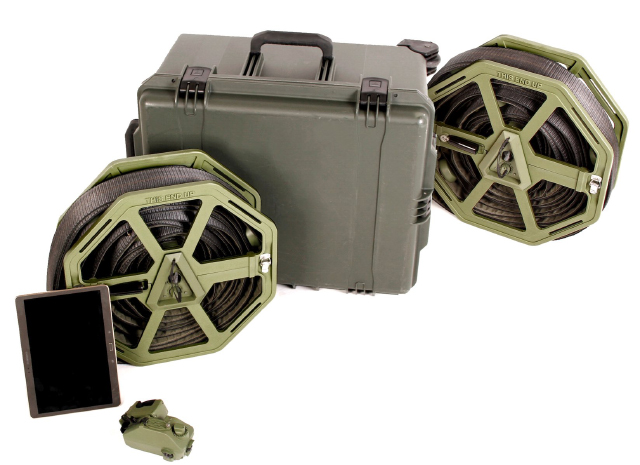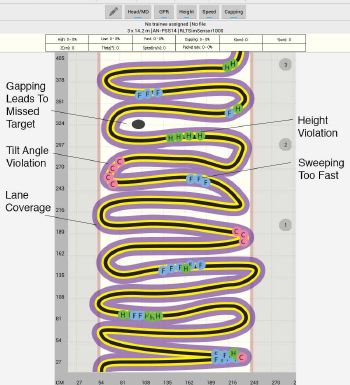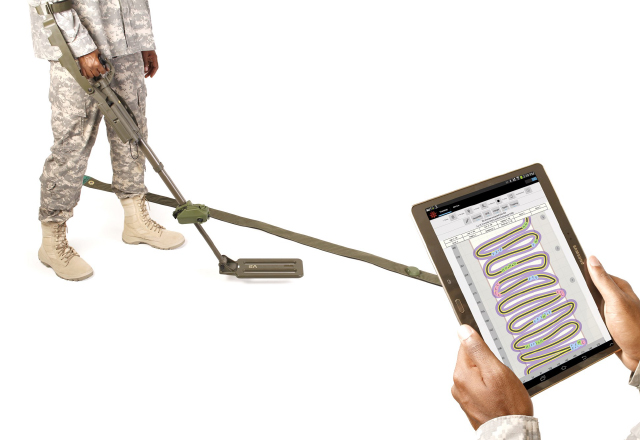This entrepreneur is using computer science to help the military detect IEDs
Lahiru Jayatilaka’s native Sri Lanka was ripped apart by a 26-year civil war. By the time a peace agreement was signed in 2009, the armed conflict had claimed more than 100,000 lives. But then a new deadly enemy emerged: undetonated landmines.
Jayatilaka, A.B. ’10, was a computer science concentrator at the John A. Paulson School of Engineering and Applied Sciences when the civil war ended. He spent that summer working with Radcliffe Fellow and fellow Sri-Lankan Thrishantha Nanayakkara, conducting research on the use of legged robots and mice to detect land mines on the South Asian island nation.
Back at SEAS, Jayatilaka decided to use his computer science training to tackle this problem. For his senior thesis project, he collaborated with Gordon McKay Professor of Computer Science Krzysztof Gajos on a system to visualize the search head motion of a handheld metal detector, a tool commonly used in the hunt for undetonated landmines. The research aimed to understand whether visualization of an operator’s spatial interrogation around a potential target could be used to determine the nature of the target.
“One of the big problems is trying to interpret the feedback from the detector,” Jayatilaka said. “Ninety percent of the time, the signals coming back are from metal clutter that creates noise.”

The VAST system Lahiru Jayatilaka developed is designed to help improve counter-explosives training. (Image provided by Lahiru Jayatilaka.)
Jayatilaka stayed at SEAS for a year after graduation to continue working on the project, extending that technology into a prototype visualization system that could be used for training. After conducting research to show the usefulness of visual feedback in training, he enrolled in a computer science Ph.D. program at Stanford University.
But he left the Ph.D. program after less than a year when officials from the U.S. Department of Defense (DoD), seeking better techniques for finding buried improvised explosive devices (IEDs), reached out and offered to fund the further development of Jayatilaka’s prototype. He founded Red Lotus Technologies in 2012 to commercialize the technology.
With funding and technical expertise from the Army Research Lab in Adelphi, Md., Red Lotus Technologies has developed a handheld dual-sensor detector training system, called Visualization and Signature Technology (VAST), which provides visual feedback on key elements of detector technique. Dual-sensor detectors are more sophisticated than metal detectors and are now used by military personnel to detect buried IEDs.
VAST is intended to improve counter-explosives training by helping instructors better analyze the work of detector-operator trainees. The system provides visual feedback, displayed on a tablet, detailing swing speed, swing path and coverage, detector head height, and angle relative to the ground.
“It sounds simple, waving a metal detector over the ground, but the detectors are very sensitive to height above the ground, how fast you move them, etc. All these parameters matter,” Jayatilaka said. “Teaching someone to do it correctly and for a long period of time is not as easy as it sounds.”
 DoD instructors typically train about eight operators at a time. Visual feedback allows them to easily determine which students are performing well, and which need additional coaching and practice.
DoD instructors typically train about eight operators at a time. Visual feedback allows them to easily determine which students are performing well, and which need additional coaching and practice.
The portable system utilizes a series of ultrasound beacons placed across the training ground. Using sonar ranging, VAST determines how the student is sweeping the detector and generates visual feedback on the sweep-search trajectory path.
Fine-tuning the system for use by customers has been the biggest challenge Jayatilaka faced during development.
“Research prototypes are very different from final products,” he said. “With a company, my time is spent on building products that are waterproof and can be manufactured at scale, for example. There is a very different set of challenges.”
His company recently finalized the product design and is working to service his first DoD order, which should he shipped out in March 2017. In additional to ramping up manufacturing and distribution, he is focused on reducing the weight of the finished product, bringing down the cost of the device, and making it more energy efficient.
In the future, Jayatilaka intends to explore potential applications for his system in a humanitarian context. As IEDs become more commonly used during conflicts in developing countries, the VAST system may have applications in helping non-governmental organizations train local villagers to detect threats. Jayatilaka is studying the challenges involved in tweaking the system for use by NGO teams in the field.
“Helping soldiers find IEDs and helping them maintain safety is my underlying motivation for working on this,” he said. “And I really hope that it will have applications in the humanitarian context, helping save lives in places like Cambodia, Vietnam, and Laos.”

The VAST system provides visual feedback, displayed on a tablet, detailing swing speed, swing path and coverage, detector head height, and angle relative to the ground. (Image provided by Lahiru Jayatilaka.)